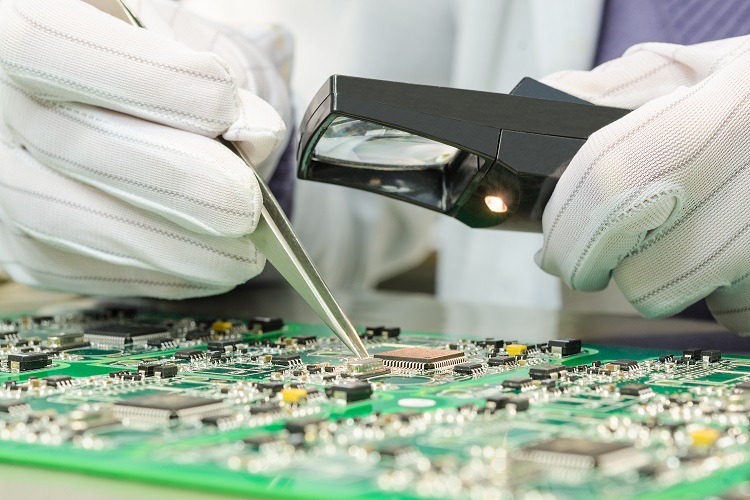
Electronics manufacturers and procurement specialists keep the need to find quality electronic components as a top priority at all times. However, the new year is an excellent time to review current procurement strategies and see where room for improvement exists. People can then adopt new strategies that see them through 2022 and beyond. Here are some practical starting points.
Engage with suppliers
Procurement team members should regularly communicate with representatives at the companies where they get their supplies. It’s also useful to do this when screening potential suppliers.
A frequent practice is to pay gatekeeper fees instead, so someone at a third-party company communicates with suppliers on behalf of procurement teams. This safeguards people from cold calls that could waste their time. On the other hand, it means those with purchasing authority have no direct contact with the innovative products that could grow their businesses.
Staying abreast of new offerings and the companies that provide them happens most readily through phone calls and site visits associated with the suppliers. Those take time and are not always fruitful. Still, they could pay off with benefits that are not typically present when procurement team members close themselves off from conversations with suppliers.
Consider coming up with a list that helps narrow down which suppliers are most worth the time. For example, does the company have quality electronic components it buys often or might soon source from elsewhere? Can it offer the goods at an enticing price? Those questions help answer whether to plan an in-depth conversation.
Choose metrics that support quality electronic components
Carefully selected metrics can support a procurement team’s goal of getting high-quality electronics parts this year. They help company representatives see what’s going well and alert them to possible problems.
Manufacturers often use the process capability index (Cpk) to measure how well a machine can produce something within a customer’s specification limits. A higher Cpk value indicates a better capability to meet that goal. Those falling in the range of 1.33 to 1.66 come within the industry standard.
From the procurement side of things, a company might create a scorecard on which current suppliers must meet a minimum standard to continue a client relationship. It would likely cover what percentage of a supplier’s goods pass quality control and how often they are delivered by the expected dates.
There are also procurement-specific metrics. They might measure the cost savings over a given period, the average order cycle time or the emergency purchases rate. That’s no reason for dismay if these data points uncover issues. It’s merely a signal that procurement specialists should act now to stop the identified problems from worsening.
Increase dependence on digital tools
It becomes much harder to source electronic parts if the people responsible for procurement have to deal with too much manual paperwork. There’s an increased probability of errors or documentation getting lost in such cases.

That’s why the new year is an excellent time for procurement specialists to explore how they could use more digital tools to make things easier. A good starting point is to ensure a company’s enterprise resource planning (ERP) system contains accurate and up-to-date procurement and purchasing data. An ERP connects multiple departments in a linear environment and is incredibly comprehensive.
Bringing automation to some parts of the procurement process could save time and boost results. An automated tool can automatically send the right documents to a supplier based on previous communications.
Automated tools can also recognize certain keywords in message bodies or subject lines, ensuring correspondence gets to the right parties immediately. That way, humans don’t have to take extra time to field incoming emails and decide who should receive them.
Statistics show that a digital transformation can cause two-and-a-half times greater procurement return on investment. It can also reduce associated costs by 25%. Learning to use more digital tools in a company’s procurement processes takes a teamwide effort, but it can pay off in significant ways.
Stay abreast of emerging technologies that boost quality
The suggestions above are strong examples of tips people can put into practice immediately. However, it’s also useful to stay in the loop about new technologies that could eventually impact people’s efforts to procure quality electronic components.
One recent relevant initiative is Fraunhofer IAP’s SmartID. It will allow people to use devices such as smartphones to verify a product’s authenticity without connecting to a database first. Researchers hope to print identifying marks directly on an item’s packaging. Later phases of the project will look at the feasibility of putting such identifiers into the products.
This work could be instrumental in curbing counterfeit goods. When procurement specialists take the time to learn what’s in the pipeline, it’ll be easier to implement those tools into their processes if possible.
Procuring high-quality electronic components takes an ongoing, dedicated effort. Even then, it’s not always straightforward. Fortunately, these tips will help procurement professionals gain momentum to last through this year and help them make practical decisions for the foreseeable future.


